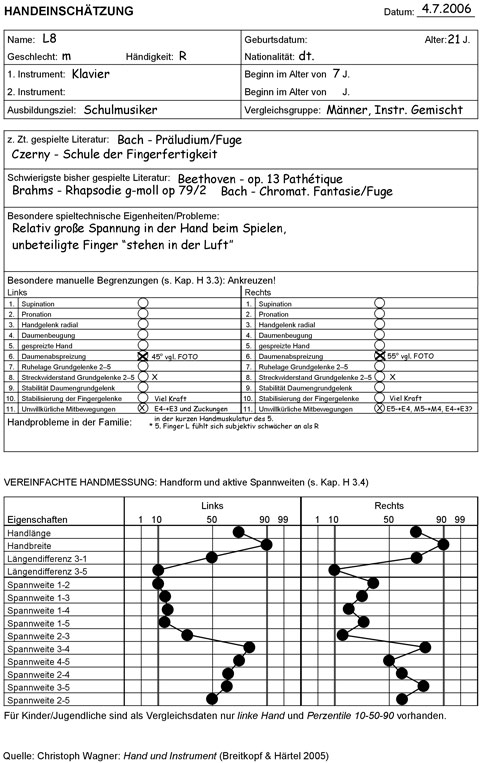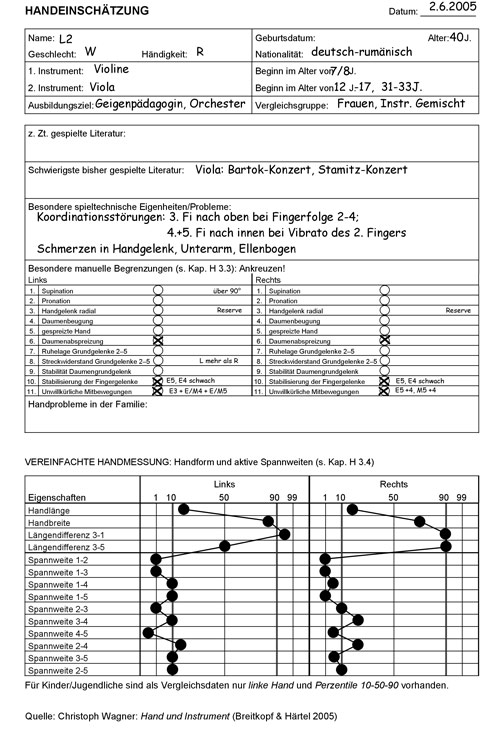|
Part 1: test movements
The 11 test movements examine characteristics
with strong intra-individual variations, the precise measurement of
which would be very time-consuming:
- Pronation (Einwärtsdrehen des Unterarmes)
- Supination (Auswärtsdrehen
des Unterarmes)
- Abduction of the wrist in direction of the
thumb
- Flexion of thumb
- Angles between the long fingers when spread
apart
- Abduction of thumb
- Resistance of finger base joints during
extension (2 test movements)
- Stability of the thumb’s base joint
- Strength within all the finger joints
- Involuntary movements of fingers when
executing other movements
The subject
executes some simple movements which allow conclusions on mobility,
strength and independence of finger movement in regard to instrumental
playing. If the test question must be answered with "yes", this
indicates a (more or less distinctive) limitation in the mentioned
characteristics. Depending on the instrument, this is more or less
relevant and should, if necessary, be considered in the person's
technique.
|
for example:
 
  
 
|
|
An Example:
Abduction
of the thumb 
|
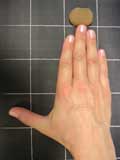
|
Task:
maximum spreading of the thumb
Question: “Does the thumb (only) form an acute angle with the
longitudinal axis of the hand? “(not a right or still larger
angle.)
The answer for the subject (photo) is: „Yes! “- This points at
difficulties e.g. with large grips at the piano. This restriction can
usually not be compensated by training, but only by other measures
(fingering, adjusting movements by hand and arm, etc.).
|
|
Example:
Data sheet "men right hand" |
|
|
|
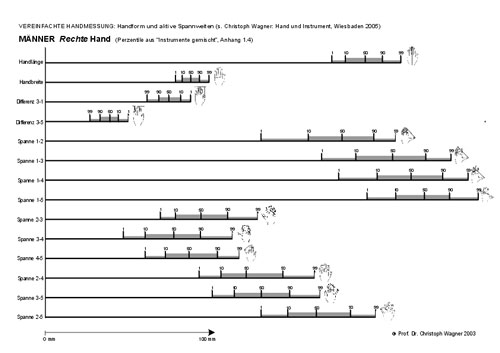 |

| The
middle and the extrem areas are marked differently,
so that one can
immediately read the result when the hand is placed on the sheet. |
| The
results of the measurement are registered in the form
for hand evaluation. As in the first part these parameters have
a different significance for the individual instruments, too. |
|
|
|
e.g.:
measurement hand breadth
|
e.g.:
measurement
fingertip
distance middle finger - thumb |
e.g.:
measurement span width 1-2
|
|
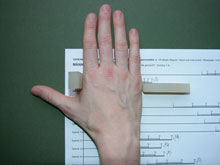 |
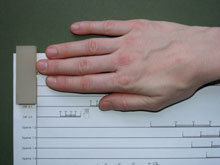
|
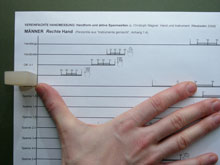
|
|

